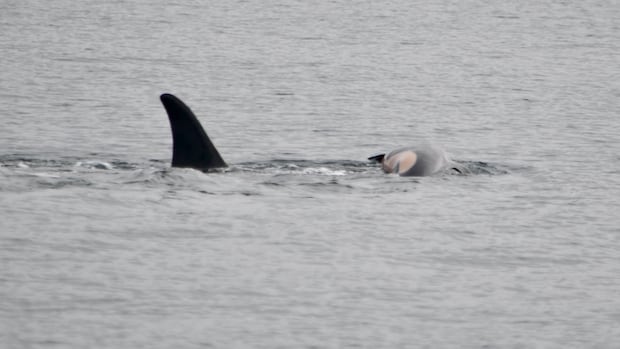A mother killer whale who famously pushed the body of her dead newborn for 17 days in 2018 has lost another calf, and researchers say she is again carrying the body in an apparent act of grief.
The Center for Whale Research said in a New Year’s Day post on social media that the mother known as Tahlequah, or J35, has now lost two of her four documented calves.
The centre had announced on Dec. 21 that the new female calf was travelling with J pod in Puget Sound near Seattle, on the northwest coast of Washington state. The pod also frequents British Columbia waters.
But the organization expressed concern about the calf’s health, and on Wednesday confirmed the calf had died, although a second apparently healthy newborn was also observed with the pod.
Brad Hanson, a research scientist with the National Oceanic and Atmospheric Administration’s Northwest Fisheries Science Center, told a news conference Thursday that researchers are not yet sure why the calf died, but a necropsy likely won’t be possible.
“Given that J35 is very attached to it, the likelihood of us being able to recover the calf is fairly low,” he said.
Hanson said researchers are concerned about Tahlequah’s welfare as she continues to carry the calf’s body, draped over the top of her head.
“That essentially results in a lot more drag, and so her energy expenditure is going to be fairly significant,” he said, noting it may also make foraging difficult during a time of year when fish availability is more limited.
“It is a concern that she was spending a lot of energy to try to take care of this calf that she has lost.”
But, he said, she is not lagging behind her pod.
“She’s still integrated as part of the group.”
The Center for Whale Research, based in Washington state, says the death of any calf among the endangered southern resident killer whale population is “a tremendous loss,” but the latest is “particularly devastating” because she was a female and because of J35’s history.
Michael Weiss, research director for the centre, told the news conference that other southern resident orcas have been observed carrying dead calves before, but not for weeks as J35 did in 2018.
“It’s usually been kind of one-off observations within a particular encounter, as opposed to multiple weeks,” he said.
Joe Gaydos, the science director for marine conservation program SeaDoc Society, said “it is fair to say that she is grieving, or mourning.”
“Over the last few years, we realized that we have the same neurotransmitters that they have,” he said of the whales. “I think it’s fair to say from a scientific perspective that they have the same hard wiring, [so] they’re going to have the same emotions.”
The research centre said the sex and mother of the other recent newborn calf have not yet been identified, but it appears “physically and behaviourally normal.”
Southern resident orcas along the West Coast are categorized into three families known as the J, K and L pods, each of which has its own dialect and calls that differ from the others. There are also transient orcas in the region known as Bigg’s killer whales, which feed primarily on marine mammals.
Fisheries and Oceans Canada and Parks Canada, in consultation with Transport Canada and Environment and Climate Change Canada, completed an assessment of the southern resident population last year, finding the population had dwindled to 73, with only 23 breeding females.
The Center for Whale Research also said the population had dipped to 73 in its July 1, 2024, census following the death of two adult male orcas.


